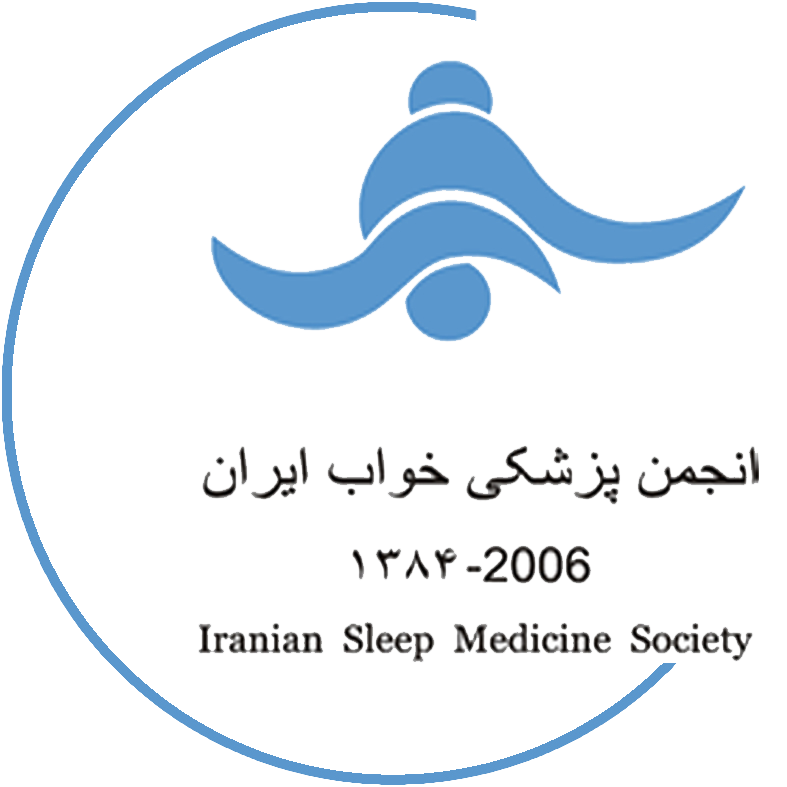Investigation of the Relationship between Sleep Habits and Sleep Structure by Polysomnography in 3-10 Year-Old Children Referring to the Sleep Department of Qazvin Children's Hospital, Iran
Abstract
Background and Objective: Improper sleeping habits can affect children's sleep structure and reduce the quantity and quality of sleep. In this study, we aimed to investigate the relationship between sleep habits and sleep structure in children.
Materials and Methods: The population of this cross-sectional descriptive-analytical study included children aged 3-10 years who were referred to the sleep department of Children's Hospital in Qazvin City, Iran, during 2015-2021 and had undergone standard polysomnography (PSG). The Iranian version of the Children's Sleep Habits Questionnaire (CSHQ) was completed by parents. Sleep structure parameters of PSG were used. Statistical tests included mean, standard deviation (SD), and independent t-test.
Results: Among 163 patients, 102 (62.6%) were boys. The average age of the children was 6.35±3.72 years. According to CSHQ, the average score of "resistance before sleep" was 2.08±0.38 and the highest score was related to "falling asleep in your bed" (2.50±0.81). The highest score of "sleep duration" was related to "sleeping the same amount each day" (2.54±0.75). The comparison of PSG findings showed that the mean score of bedtime resistance had a statistically significant relationship with increased stage N1 and decreased sleep efficiency (SE) (P = 0.01). Moreover, the mean score of "sleep duration" was associated with abnormal Arousal Index (AI) (P = 0.01).
Conclusion: According to the results, children who were reported to be sleep-deprived had a higher percentage of light sleep and frequent night awakenings, and less SE in the PSG. Appropriate health strategies are needed to improve chil-dren's sleep habits.
2. Jiang F. Sleep and early brain development. Ann Nutr Metab 2019; 75: 44-54.
3. Matricciani L, Blunden S, Rigney G, et al. Children's sleep needs: Is there sufficient evidence to recommend optimal sleep for children? Sleep 2013; 36: 527-34.
4. Lemola S, Raikkonen K, Scheier MF, et al. Sleep quantity, quality and optimism in children. J Sleep Res 2011; 20: 12-20.
5. Bonuck KA, Goodlin-Jones BL, Schechter C, et al. Modified Children's sleep habits questionnaire for behavioral sleep problems: A validation study. Sleep Health 2017; 3: 136-41.
6. Phillips SR, Johnson AH, Shirey MR, et al. Sleep quality in school-aged children: A concept analysis. J Pediatr Nurs 2020; 52: 54-63.
7. Markovich AN, Gendron MA, Corkum PV. Validating the children's sleep habits questionnaire against polysomnography and actigraphy in school-aged children. Front Psychiatry 2014; 5: 188.
8. Jalilolghadr S, Pakpour-Hajiagha A, Heidaralifard M, et al. Evaluation of sleep habits and sleep patterns among 7-12-year-old students in Qazvin, Iran; a school-based cross-sectional study. J Compr Pe. 2018; 9: e67189.
9. Mohammadi M, Ghalebaghi MD, Bandi MD, et al. Sleep patterns and sleep problems among preschool and school-aged group children in a primary care set-ting. Iran J Ped 2007; 17: 213-21.
10. Perpetuo C, Fernandes M, Verissimo M. comparison between actigraphy records and parental reports of child's sleep. Front Pediatr 2020; 8: 567390.
11. Javadi M, Kalantari N, Jalilolghadr S, et al. Sleep habits and dietary intake among preschool children in Qazvin. J Compr Ped 2014; 5: e5134.
12. Knoop MS, de Groot ER, Dudink J. Current ideas about the roles of rapid eye movement and non-rapid eye movement sleep in brain development. Acta Paediatr 2021; 110: 36-44.
13. Shoghi M, Farmani F, Hosseini A. Sleep habits of school age children. Iran J Nurs 2005; 18: 131-8. [In Persian].
14. Amintehran E, Ghalehbaghi B, Asghari A, A, et al. High prevalence of sleep problems in school and pre-school-aged children in Tehran: A population based study. Iran J Pediatr 2013; 23: 45-52.
15. Troester MM, Quan SF, Berry RB, et al. The AASM Manual for the Scoring of Sleep and Associated Events: Rules, Terminology and Technical Specifi cations. Version 3. Darien, IL: American Academy of Sleep Medicine; 2023.
16. Westerlund A, Lagerros YT, Kecklund G, et al. Relationships between questionnaire ratings of sleep quality and polysomnography in healthy adults. Behav Sleep Med 2016; 14: 185-99.
17. Rahimi Derazi Z, Bagherzadeh R, Ravanipour M. Evaluation of sleep habits and some related factors on school age children in Bushehr city in 2019. J Pediatr Nurs 2021; 7: 43-50. [In Persian].
18. Liu X, Liu L, Wang R. Bed sharing, sleep habits, and sleep problems among Chinese school-aged children. Sleep 2003; 26: 839-44.
19. Parsapour Z, Torabi E, Jalilolghadr S, et al. The evaluation of sleep disorders in children with adenotonsillar hypertrophy referring to the otolaryngology clinic of Qazvin Children Hospital, Iran. J Sleep Sci 2019; 4: 24-8.
20. Jalilolghadr S, Taghiloo M, Parsarad E, et al. Evaluation of sleep-disordered breathing in children and adolescents referred to the sleep ward of Qazvin children's hospital during 2014-2019. Int J Pediatr 2022; 10: 15261-70.
21. Durdik P, Sujanska A, Suroviakova S, et al. Sleep architecture in children with common phenotype of obstructive sleep apnea. J Clin Sleep Med 2018; 14: 9-14.
22. Chamnanpet S, Tovichien P, Tanphaichitr A, et al. Prevalence and risk factors for rapid eye movement-related obstructive sleep apnea in children. Front Pediatr 2022; 10: 869986.
23. Spruyt K, Gozal D. REM and NREM sleep-state distribution of respiratory events in habitually snoring school-aged community children. Sleep Med 2012; 13: 178-84.
| Files | ||
| Issue | Vol 8 No 1-2 (2023): Winter- Spring | |
| Section | Original Article(s) | |
| DOI | https://doi.org/10.18502/jss.v8i1-2.17868 | |
| Keywords | ||
| Sleep habits Child Sleep Polysomnography | ||
| Rights and permissions | |

|
This work is licensed under a Creative Commons Attribution-NonCommercial 4.0 International License. |



